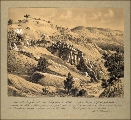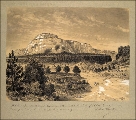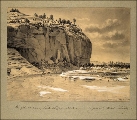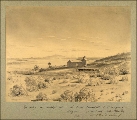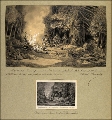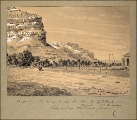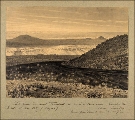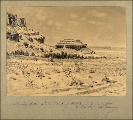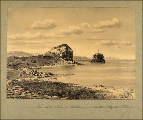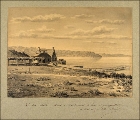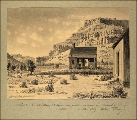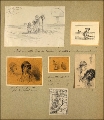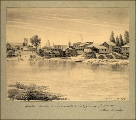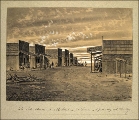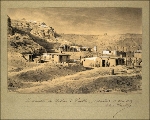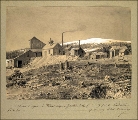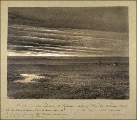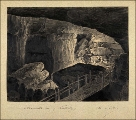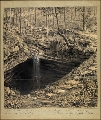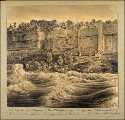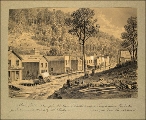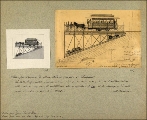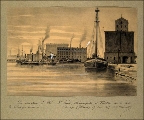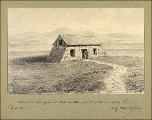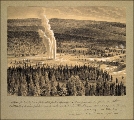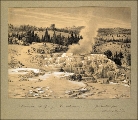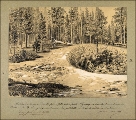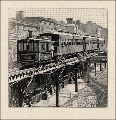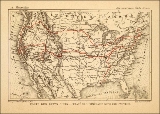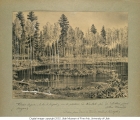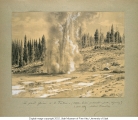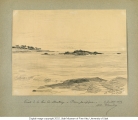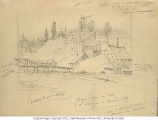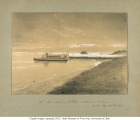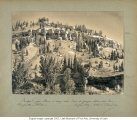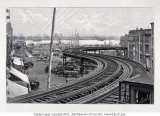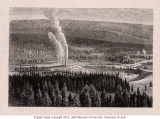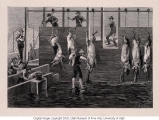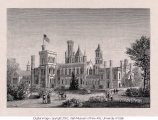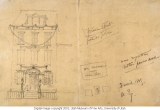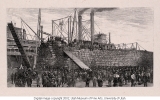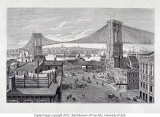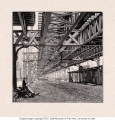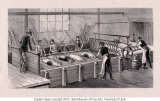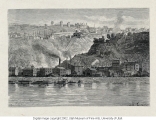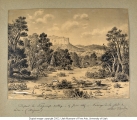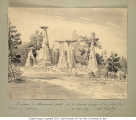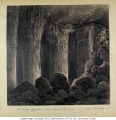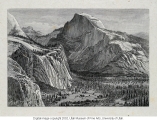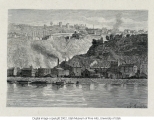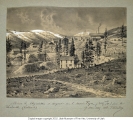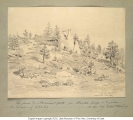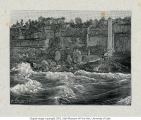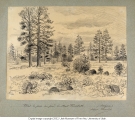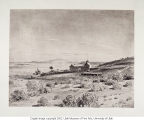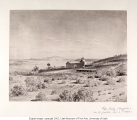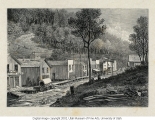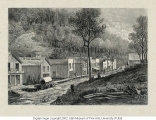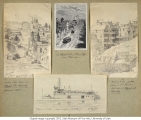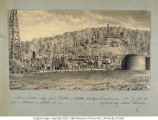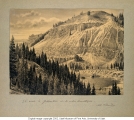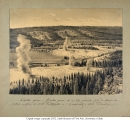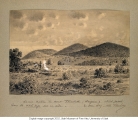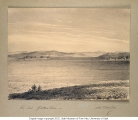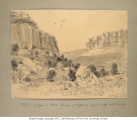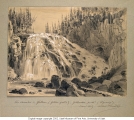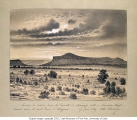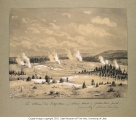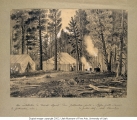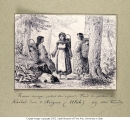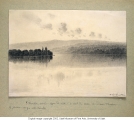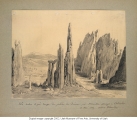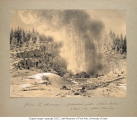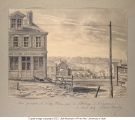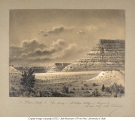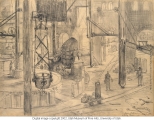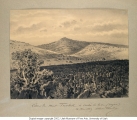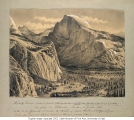| Identifier |
1978_247a-f_sixDrawings.jpg |
| Title |
Thumbnail Sketches Made in or around Kaibab |
| Artist's Notation |
A "Boite aux lettres dans les ranchos de l'Utah"; B "dessin paru dans la Nature"; C "John Panichkoss guide Ute de la forêt de Kaibab"; D " Indiens Utes rapportant de l'eau d'une source à leur campement" |
| Creator |
Tissandier, Albert 1839-1906; Bassan, A.; Morieu, E. |
| Subject |
Sketches--1880-1890; Indians of North America--Clothing & dress--Arizona--1880-1890; Mailboxes--Utah--1880-1890 |
| Description |
Associated text for images C and E from Albert Tissandier's book Six mois aux États-Unis : voyage d'un touriste dans l'Amérique du nord suivi d'une excursion à Panama (Paris : G. Masson, [1886]), p. 92-93: "Pendant ce temps Nathan s'était informé d'un guide. Sur ses instances, un jeune Indien, occupé sous sa tente à faire sa toilette, se décide à nous accompagner; il s'appelle John Panichkos (je ne saurais garantir l'orthographe du nom). Sa figure est peinte. Je ne pouvais rêver un plus joli guide. Il demande 6 fr. 25 par jour pour lui et son cheval : c'est accordé sur-le-champ, et nous voilà partis. Le lendemain matin mon guide mormon me dit que John est contrarié; la peinture de sa figure s'est presque effacée et il n'a pas les onguents nécessaires pour refaire ses ornements de la veille. J'ai bien ri de ce petit malheur en revoyant mon jeune Indien, for embelli pour moi, avec sa peau au naturel, ses dents blanches et ses yeux superbes. Ma seconde excursion a duré treize jours. Nous avons vécu dans la forêt vierge de Kaibab. Rien ne saurait être plus grand et plus intéressant. Naturellement il n'y a point de routes tracées dans ces bois et, comme on l'a souvent observé, les Indiens doivent avoir un sens de plus que nous pour s'y reconnaître, quelque faculté analogue à celle des pigeons voyageurs. Il me fallut traverser des montées et des descentes perpétuelles à travers des pins séculaires et d'épais taillis, puis passer par-dessus des troncs d'arbres morts, couchés sur la mousse. Quelquefois il faisait tellement sombre sous le feuillage, que c'était à me demander si la nuit n'eacute;tait point survenue tout à coup; en certains endroits les taillis étaient si épais que je ne pouvais pas voir mes compagnons à quelques pas de distance." |
| Published Location |
Image B, engraved by A. Bassan, was published in La Nature, no 665 (27 Feb 1886), as figure 4 (p. 202), to accompany the fifth installment of Albert Tissandier's "Lettres d'Amérique", with the caption "Une boîte aux lettres dans les déserts de l'Utah." http://cnum.cnam.fr/CGI/fpage.cgi?4KY28.26/206/100/432/0/0 The same image appears as figure 28 (p. 109), engraved by A. Bassan, in Albert Tissandier's book Six mois aux États-Unis : voyage d'un touriste dans l'Amérique du nord suivi d'une excursion à Panama (Paris : G. Masson, [1886]), with the caption "Une boîte aux lettres dans les ranchos (Utah), (d'après nature)". Associated text (p. 107): "Les familles mormones vivent en ces régions lointaines à la manière des anciens peuples pasteurs; elles sont souvent isolées. On voit seulement dans leurs maisons quelques livres et des cartes de géographie clouées sur le mur de la salle commune de la famille. Rarement ces solitaires reçoivent des nouvelles du dehors: il n'y a pas beaucoup de lettres à espérer dans les prairies. Un facteur passe toutefois assez régulièrement avec sa voiture primitive, où il y a place pour un voyageur; mais il ne fait pas fréquemment de distribution à domicile. Dans un endroit connu de tous, sur la route à peine tracée au milieu des herbes, une petite boîte de bois blanc est attachée sur un poteau, pour recevoir les lettres ou les paquets. Le Mormon qui espère des nouvelles d'un ami ou d'un parent vient souvent de fort loin avec son cheval pour voir s'il y a dans cette boîte quelque chose à son adresse, et il retourne heureux vers sa cabane de bois s'il a trouvé ce qu'il avait désiré (fig. 28)." Image F, engraved by E. Morieu, was published in La Nature, no 665 (27 Feb 1886), as figure 2 (p. 200), to accompany the fifth installment of Albert Tissandier's "Lettres d'Amérique", with the caption "Carte du voyage de M. Albert Tissandier dans l'Utah et l'Arizona." http://cnum.cnam.fr/CGI/fpage.cgi?4KY28.26/204/100/432/0/0 The same image appears as figure 22 (p. 73), engraved by E. Morieu, in Six mois aux États-Unis with the caption "Carte de l'itinéraire suivi par l'auteur dans l'Utah et l'Arizona". Associated text (p. 80): "La carte (fig. 22) montrera plus aisément au lecteur l'itinéraire que j'ai suivi pour visiter les canons et les forêts de l'Arizona et de l'Utah." Reproduced in the exhibition catalog, Albert Tissandier : Drawings of nature and industry in the United States, 1885, by Mary F. Francey ([Salt Lake City, UT] : Utah Museum of Fine Arts, 2001), p. 43. |
| Short Essay |
A. Box of letters for the Ranches of Utah "A small white wooden box is set on a pole on a barely traced road in the middle of a grassy area and in a location known to everyone. It is here that people can receive letters and packages from relatives and friends. The Mormon who hopes for news of a parent or other family member often comes from far away to see if there is something addressed to him in the box. In the rare event that he finds what he looks for, he happily returns to his wooden cabin." B. Design for "La Nature" by A. Basson "Mormon families live in these far-off regions in the manner of ancient pastoral people. Their villages are isolated, and in each house may be found a few books and geographical maps pinned on the walls of family living rooms. These recluses rarely receive news from the outside, and can hope for few letters or other mail. Nevertheless, a postman passes through regularly in a primitive conveyance in which there is only enough space for one person, but he doesn't make frequent deliveries to homes." C.John Panichkoss, Ute Guide in the Kaibab Forest "Their whole skin is colored a yellow-ochre, except a little vermillion under their eyebrows and on the eyelids and two circles of the same tint, as big as five-franc pieces, on the cheeks. D. Ute Indians Carrying Water from Spring "They (the Indian women) had the same superb hair and their eyes were surprisingly sparkling, but their faces were faded and withered and it would be difficult to guess their exact ages. Charged with the most grueling work, especially around the encampment, these poor women are tired and worn before they're twenty." E. Sketch of John, the Indian Guide "Their faces are slightly flat, with broadly prominent cheekbones and large eyes. They have dark skin of a golden-yellow tint similar to that of old Florentine bronzes. They have magnificent raven-black hair, falling on their shoulders and braided in front, forming long tresses intermixed with threads of red cotton, in the manner of the ancient Gauls. Rows of glass beads shine around their neck. Their clothing is in bad condition, in rags for the most part, are tailored, Eiropean style and consists solely of pants and a sort of Indian floral-design shirt. On their heads they wear little caps of an oriental form." F. French map of most of Utah and surrounding areas. Tissandier's trail from Salt Lake City to Southern Utah is indicated by the dotted line. |
| Publisher |
Utah Museum of Fine Arts |
| Contributors |
Mary F. Francey |
| Date |
1885 |
| Type |
Image |
| Format |
application/pdf |
| Source |
Albert Tissandier: Drawings of Nature and Industry in the United States |
| Language |
fra |
| Rights Management |
Digital image c2001 Utah Museum of Fine Arts, University of Utah |
| Source Physical Dimensions |
40.64 cm High x 35.56 cm Wide |
| Source Characteristics |
Graphite on paper |
| Light Source |
Kaiser Softlite ProVision 6x55W flourescent 5400K daylight |
| Archival Resolution |
TIFF: 4334 x 4996 pixels |
| Display Resolution |
JPEG: 900 x 1037 pixels |
| Bit Depth |
36-bit color |
| Scanning Device |
Leica S1 Pro scanning camera; Hasselblad CFi 50mm F/4 lens; f/11 |
| Exhibit Catalog |
ISBN: 0-9657215-0-7; Library of Congress Catalog Number: 2001094211 |
| Setname |
uu_umfa_at |
| ID |
415809 |
| Reference URL |
https://collections.lib.utah.edu/ark:/87278/s6bk1cds/415809 |

